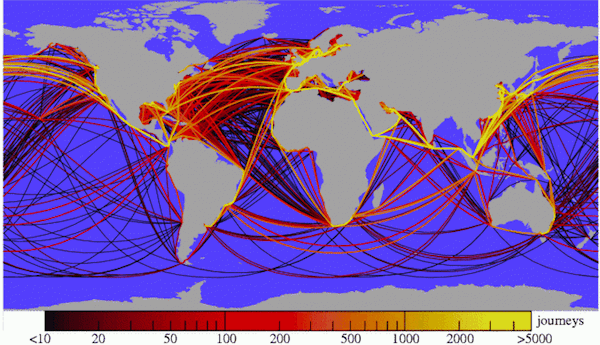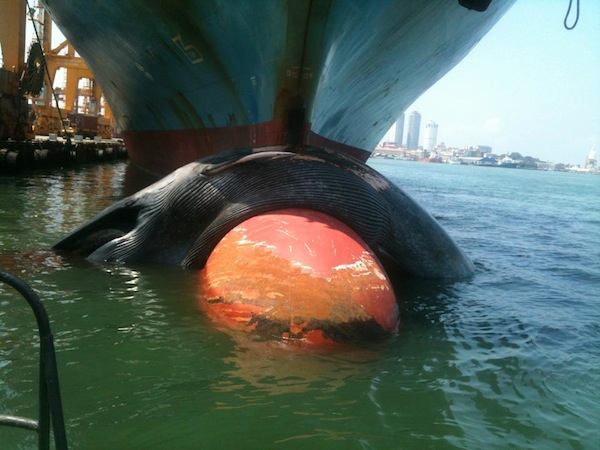
The largest animal on the planet, the blue whale, is found in Sri Lankan waters. Unusually, the blue whales off our coast do not to migrate to polar waters for feeding – a characteristic of other populations. We do not yet know why. In this interview, we talk about additional qualities that make them unique and interesting while highlighting the need for a scientific understanding of the population in order to manage and protect them into the future. In light of current and growing human encroachment in our oceans, Sri Lankan marine biologist Asha de Vos makes a strong case that the time is now.
Asha’s Sri Lanka’s second TED Fellow (and the second TED Fellow to be featured on this site). She was awarded a Zonta Woman of Achievement award in 2011 and has coordinated and implemented projects related to marine and coastal resources in Sri Lanka in collaboration with donors and partners. As a marine biologist she has worked at the International Union for the Conservation of Nature (IUCN) and as a consultant on projects for NARA. Asha de Vos has written numerous journal articles, publications, and presented her work in several countries including Australia, Maldives, the US and Sri Lanka. Most recently, at the TED conference in Long Beach, California, she delivered a presentation titled “The Unorthodox Whale”. She is currently a Ph.D. student at the University of Western Australia, where she studies the ‘factors influencing blue whale aggregations off Southern Sri Lanka’.
Relevant to our conversation was the fact that Asha leads the first major study of the unique Sri Lankan blue whales, and is attempting, over the long term, to get an estimate of the numbers of whales in Sri Lanka.
We begin by going into how Asha began her interest in cetology and marine biology, and how it was a journey on a ship near Sri Lanka’s coastal waters, and a random encounter with blue whales, that started her on a path to study these amazing mammals. Asha comes out strongly on two points, the need to regulate the whale watching industry that’s blossoming in Sri Lanka and the whale population’s proximity to one of the busiest shipping lanes in the world, and the inevitable, tragic consequence of collisions.

Image courtesy Wired. The lines in yellow reflect lanes with the most amount of ships per annum.

Photo courtesy Sopaka Karunasundera, taken in Colombo harbour in late March 2012. The ship’s crew didn’t even know they had hit and killed a blue whale.
Asha notes that she’s using technologies never been used in Sri Lanka before to more accurately map the area in which these amazing mammals swim and breed in, and stresses that aside from the obvious danger of fatal collisions, the sonar pollution from the low range frequencies of ship propulsion pose a serious threat to the health of the whale population. On regulations, Asha expresses her concern that there are no regulations around whale watching in Sri Lanka, which leads to policies and practices that are harmful to the mammals. Asha also notes how disruptive the practice of charging right towards whales on boats is, in search of a good photograph. Instead, she notes that the best chance of a great shot of a blue whale is to stop, sit, wait.
Asha’s also passionate about raising awareness about marine biology and conservation, and speaks of the need to encourage children and youth to learn more about the rich diversity of marine life around Sri Lanka. Towards the end of our conversation, we talk about how technology, including Asha’s output on the web and through her blog, advances our understanding of the issues she is working on. Asha also responds to a question as to whether technologies that bring closer, to those who haven’t experienced a blue whale sighting in real life, the magic of the mammals enhances interest in its conservation, or makes it an experience more ordinary, and as a consequence, more forgettable. Inspired by this question on our programme, Asha went on to host and curate a great conversation on TED, titled Technology doesn’t kill the magic.
We don’t talk about it much, but one of the biggest challenges Asha’s faced in the study of blue whales is not so much the complexity of the subject, but her gender. Asha’s a pioneer in this regard, and as she notes in a recent initiative to celebrate Sri Lanka’s female role models by Reach Out, “Being a marine biologist is uncommon enough, being a female marine biologist is stare-worthy. I carry heavy equipment and direct teams of researchers who are often men”. We end our conversation with Asha stressing the importance of pursuing one’s dreams, and never giving up on them, especially if the interests lie with marine biology and conservation.

